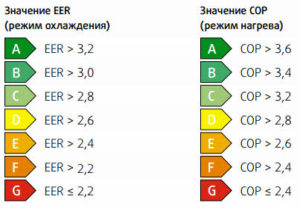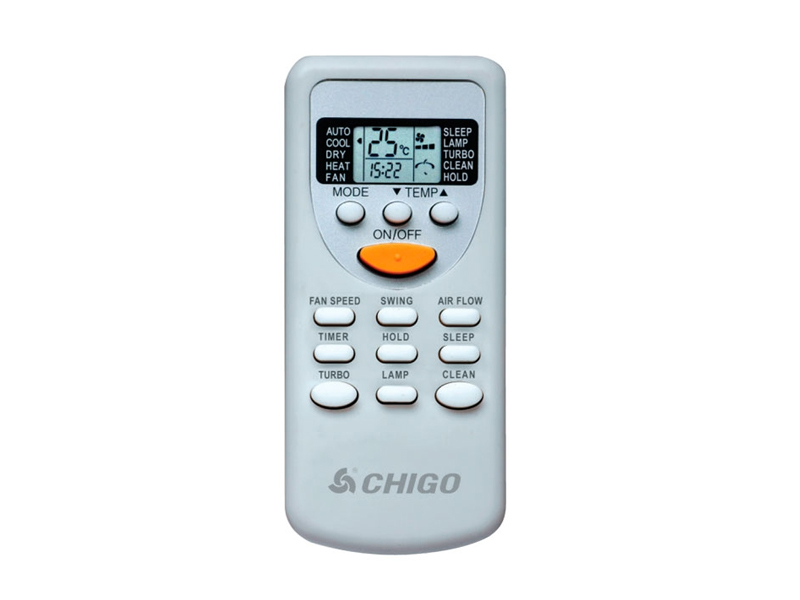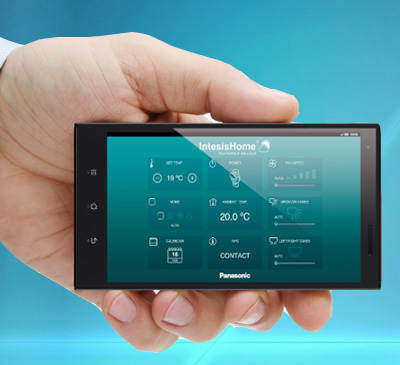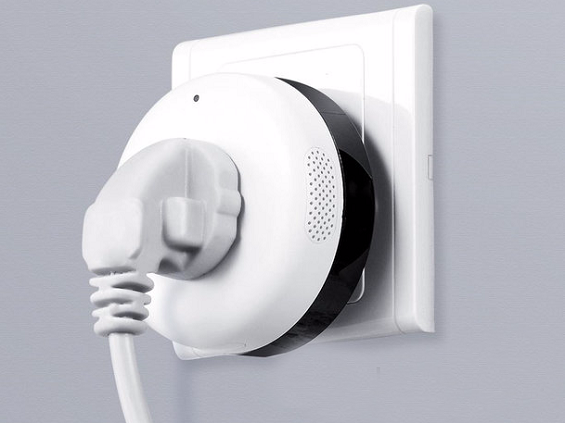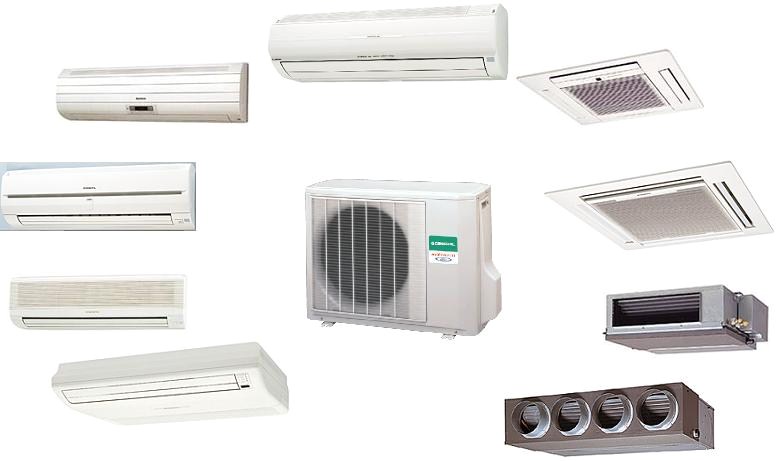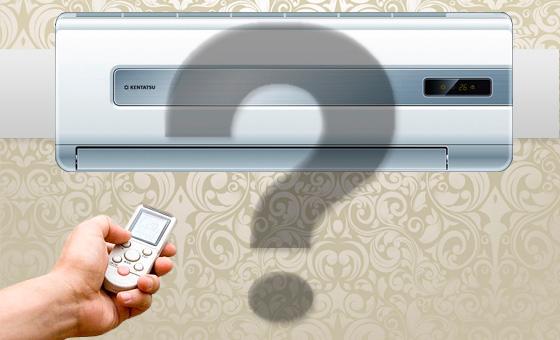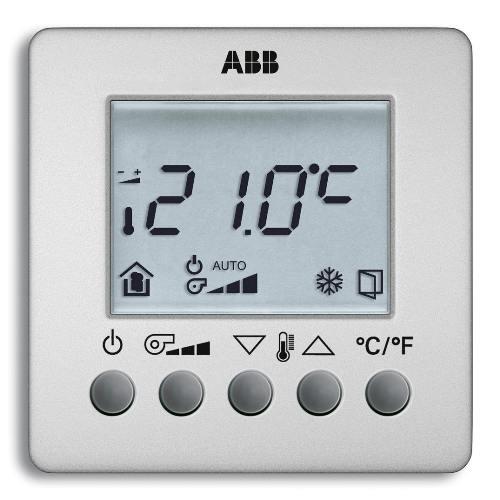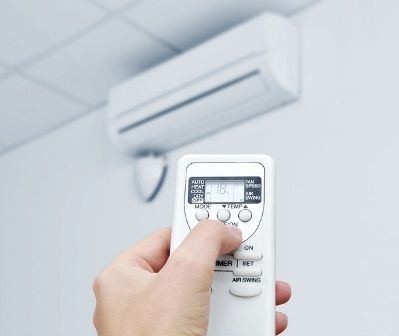With a competent approach to choosing an air conditioner, the energy efficiency class is one of the main criteria. This indicator determines the efficiency of climatic technology, the ratio of energy consumption to cold / heat performance. In Europe, seasonal SEER and SCOP coefficients have been developed that allow comparing the energy efficiency of different models of climatic technology in real conditions.
Energy efficiency indicators of air conditioners
EER = Q (cold) / N (sweat)
The COP effective for heating mode is calculated in the same way.
COP = Q (heat) / N (sweat)
In simple words, the coefficients show the consumer how much heat / cold the split-system generates with the consumption of 1 kW of electricity. The higher the values obtained, the more efficiently the air conditioner operates at low current consumption.
For industrial air conditioning systems and heat pumps, the index is determined in KW / ton - consumed energy (kW) / refrigerating capacity (ton of refrigeration). The ratio of the coefficients is KW / ton = 12 / EER.
The operating conditions of climatic equipment affect its performance and electricity consumption. Taking into account the load by the seasons, seasonal indicators have been developed.
EER coefficient
The most famous instant indicator associated with certain conditions, EER (Energy Efficiency Ratio). It is designed for nominal duty under standard conditions. For household split systems, its value is from 2.5 to 3.5. The indicator is used in all countries to avoid confusion with the labeling of equipment. The classification of air conditioners according to energy efficiency classes is determined according to the EER index. They are assigned one of seven letter designations in the range of the English alphabet A-G. Class A appliances are characterized by low energy consumption, EER 3.2. Class G is the least effective, EER 2.2.
COP coefficient
The COP (Coefficient of Perfomance) thermal index characterizes the ratio of heating performance to the energy used. Its value for household split systems is 2.8-4.0. The index for heat is higher than for cold. This is due to the peculiarity of the technique. The included compressor heats up in any mode and transfers more heat to freon than cold. The energy efficiency class of the air conditioner is determined by COP in seven categories from A to G. The design temperature values are + 27 ° in the room. Typical outdoor air data for measuring readings:
- cooling - 35 ° C;
- heating - 7 ° C.
System power is maximum. Seasonal indicators are intended to determine the actual energy efficiency of the equipment.
ESEER Seasonal Energy Efficiency Index
- warm zone - 3590;
- middle zone - 4910;
- cold zone - 6446.
For cooling mode, the average value is displayed - 2602 hours / year. On the information sticker of the climatic equipment, the law provides for the rule to indicate the coefficients of seasonal energy efficiency SCOP only for the middle climatic zone.
Seasonal factors are calculated by national authorities. The development is based on:
- statistical information on the load of air conditioning systems during the year;
- local climatic conditions;
- energy costs;
- class of air conditioners.
The collected load values graphically represent a smooth curve. The generalized index of energy efficiency is found by the formula: integral of the load function divided by the duration of the period. Simplifies calculations by a four-step averaging of the presented relationship.
Alternative to European labeling
Less common options for labeling the energy efficiency parameters of air conditioners are the EMPE coefficient (Italy) and IPLV (USA).
Italian EMPE indicator
The Italian Air Conditioning Association AICARR has developed its own way of chiller energy efficiency. Its EMPE coefficient was derived for Eastern and Central Europe. Study conditions parameters:
- the refrigerant flow does not change;
- inlet temperature stable - 7 ° C.
American IPLV indicator
The cumulative IPLV factor is used in the United States of America market. The efficiency value is determined at partial load. The indicator does not apply to central air conditioning systems. In the calculation parameters, it is assumed that the period of operation with a high load of 75-100% is no more than 1%.
New Energy Efficiency Indicators: SEER and SCOP
- SERR is the seasonal operating ratio in cooling mode;
- SCOP is the seasonal coefficient for split systems operating for heating.
The new designations are used for household air conditioners with a cooling capacity of up to 12 kW.
The development of more advanced models of climatic technology forced to change the classification of energy consumption. In addition to updating the labeling of seasonal indicators, several new energy efficiency classes were introduced: A +, A ++, A +++. Modern models have surpassed the parameters of their sector. The lower limit is now the energy efficiency class of the air conditioner D, the classes E, F, G are canceled.
Which air conditioner to buy
Inverter air conditioners are the best option for the ratio of consumed energy and produced power. Manufacturers of energy efficient climate control equipment: Panasonic, Daikin, Mitsubishi Electric, Fujitsu. Equipment with a high SEER index is distinguished by economical electricity consumption, low noise level, and wide functionality. The disadvantage of split systems is the high cost. You will have to pay in advance to save on operating costs.
A significant share of electricity consumption in developed countries is accounted for by air conditioning and ventilation systems. The introduction of stringent energy saving requirements made it necessary to revise the outdated EER and COP coefficients and replace them with integral seasonal indicators. Manufacturers have modernized climatic equipment, have included intermediate standard sizes in the split-system line. The labels of air conditioners supplied to Europe indicate the energy class (A +++ to D) and the seasonal energy efficiency index for each climate zone in the EU.

